Team:UCL/protocols
From 2014.igem.org
(Difference between revisions)
Adamdenyer (Talk | contribs) |
Adamdenyer (Talk | contribs) |
||
| Line 56: | Line 56: | ||
</p> | </p> | ||
| + | |||
| + | <h4>Transformation of competent cells</h4> | ||
| + | |||
| + | <p> | ||
| + | <b>Materials</b> | ||
| + | |||
| + | Competent Cells - 50ul per transformation | ||
| + | |||
| + | DNA - 1ug of DNA per 50ul | ||
| + | |||
| + | Antibiotic Plates | ||
| + | |||
| + | |||
| + | Procedure | ||
| + | |||
| + | · Check which resistance plates you need! | ||
| + | |||
| + | Thaw competent cells on ice | ||
| + | |||
| + | 50uL cells enough for 1 transformation | ||
| + | |||
| + | Add 1ug of DNA to 50uL competent cells | ||
| + | |||
| + | If biobrick from distribution, resuspend DNA well in 10uL ddH20 | ||
| + | |||
| + | Add 1uL biobrick DNA to 50uL competent cells | ||
| + | |||
| + | Add 1uL RFP control to 50uL competent cells for your control transformation | ||
| + | |||
| + | pSB1A3 w/ BBa_J04450 | ||
| + | |||
| + | Flick by hand or pipette up and down gently | ||
| + | |||
| + | Ice for 30 min (roughly) | ||
| + | |||
| + | 40s incubation at 42oC in water bath | ||
| + | |||
| + | 2 min on ice (minimum - 30 min max) | ||
| + | |||
| + | Add 0.5mL of LB media and shake for 30min to 2h | ||
| + | |||
| + | Just tape down tube to incubator | ||
| + | |||
| + | This is the recovery step | ||
| + | |||
| + | SOC media is used if doing cloning in order to improve efficiency | ||
| + | |||
| + | Label two petri dishes with LB agar and the appropriate antibiotics(s) with the part number, plasmid backbone and antibiotic resistance | ||
| + | |||
| + | Plate 50 µl and 500 µl of the transformation onto the dishes, and spread. | ||
| + | |||
| + | This helps ensure that you will be able to pick out a single colony. | ||
| + | |||
| + | Use sterile spreader | ||
| + | |||
| + | For the control, label two petri dishes with LB agar (AMP). Plate 50 µl and 500 µl of the transformation onto the dishes, and spread. | ||
| + | |||
| + | Incubate the plates at 37ºC for 12-14 hours, making sure the agar side of the plate is up. | ||
| + | |||
| + | If incubated for too long the antibiotics start to break down and un-transformed cells will begin to grow. This is especially true for ampicillin - because the resistance enzyme is excreted by the bacteria, and inactivates the antibiotic outside of the bacteria | ||
| + | |||
| + | You can pick a single colony, make a glycerol stock, grow up a cell culture and miniprep. | ||
| + | |||
| + | Count the colonies on the 20 μl control plate and calculate your competent cell efficiency. | ||
| + | |||
| + | <p> | ||
</div> | </div> | ||
Revision as of 14:38, 5 September 2014
 "
"
